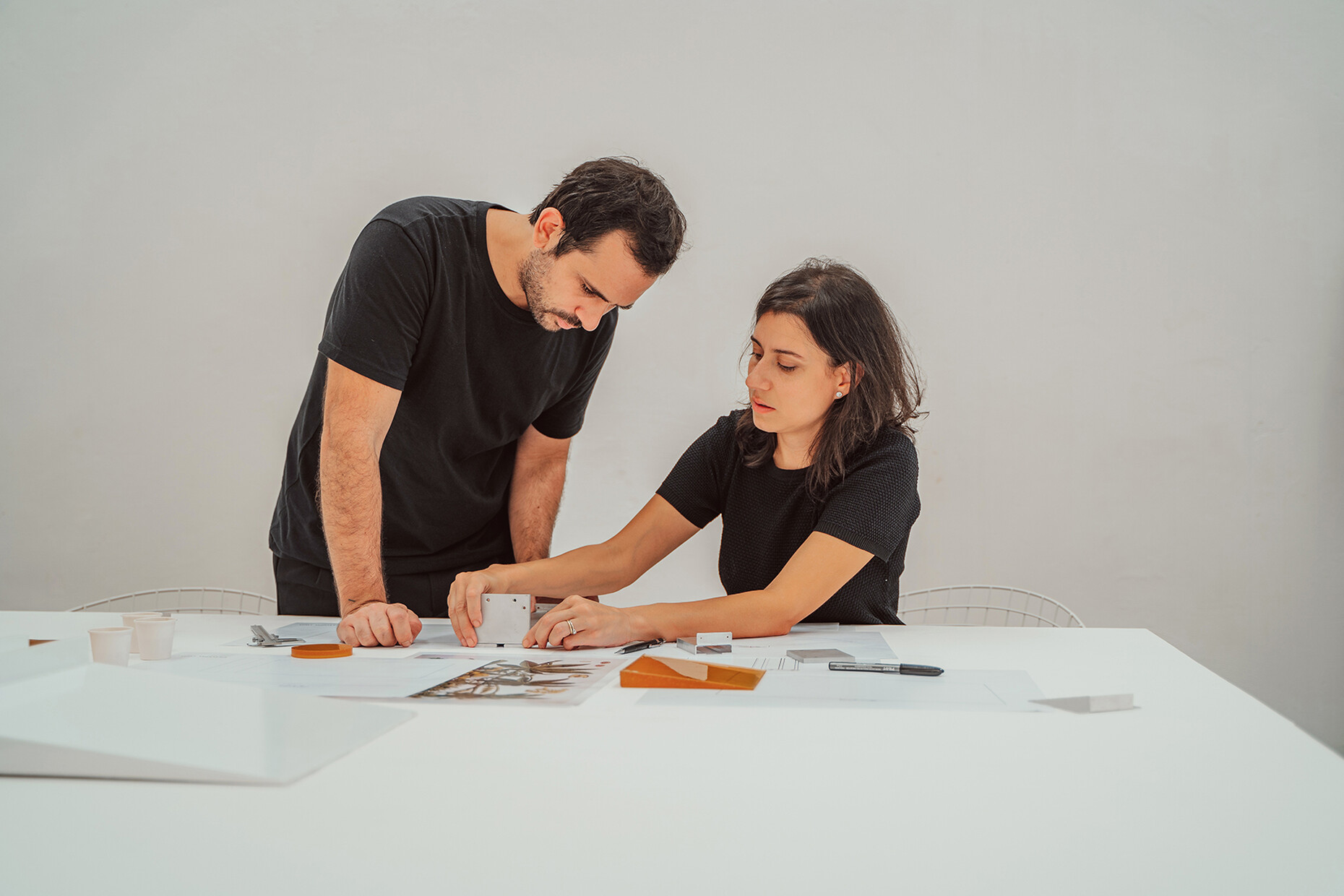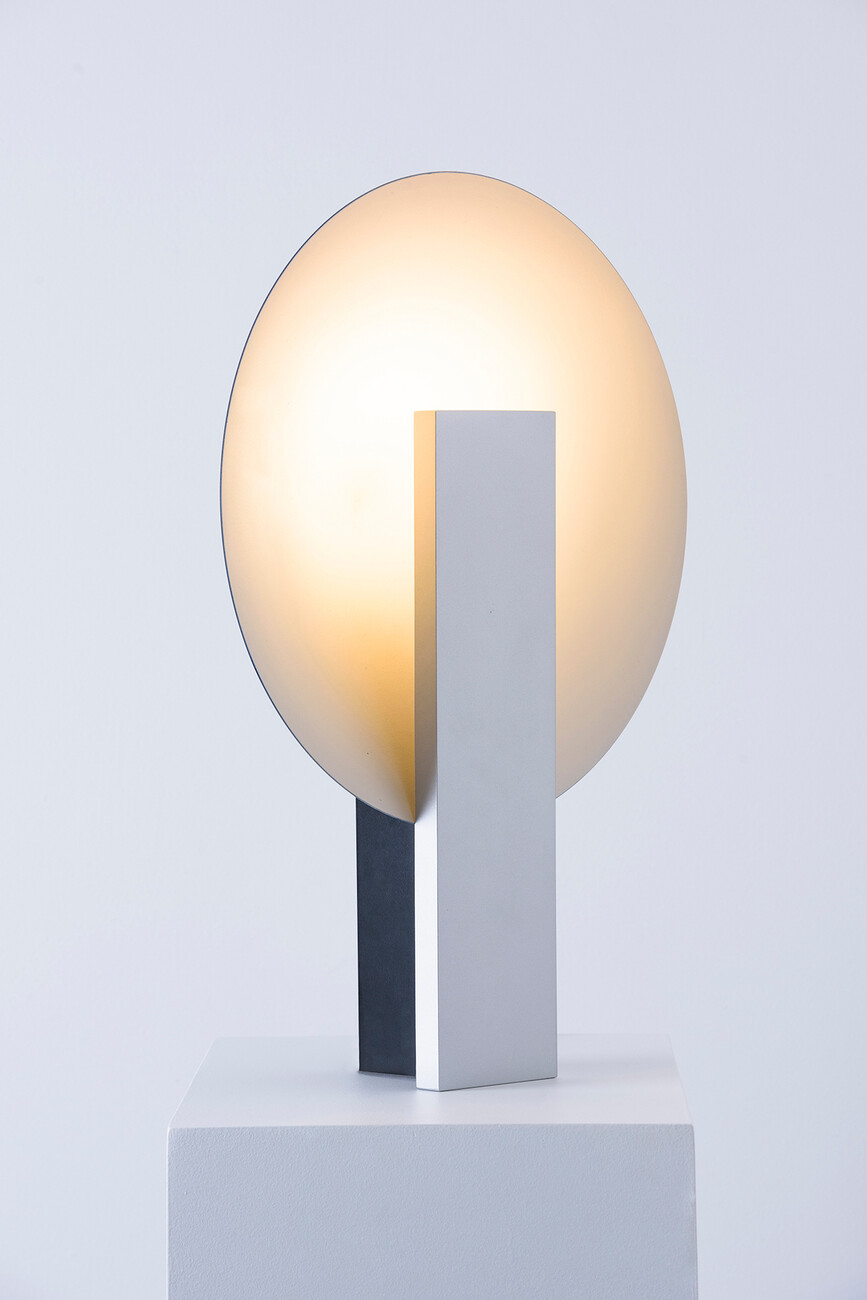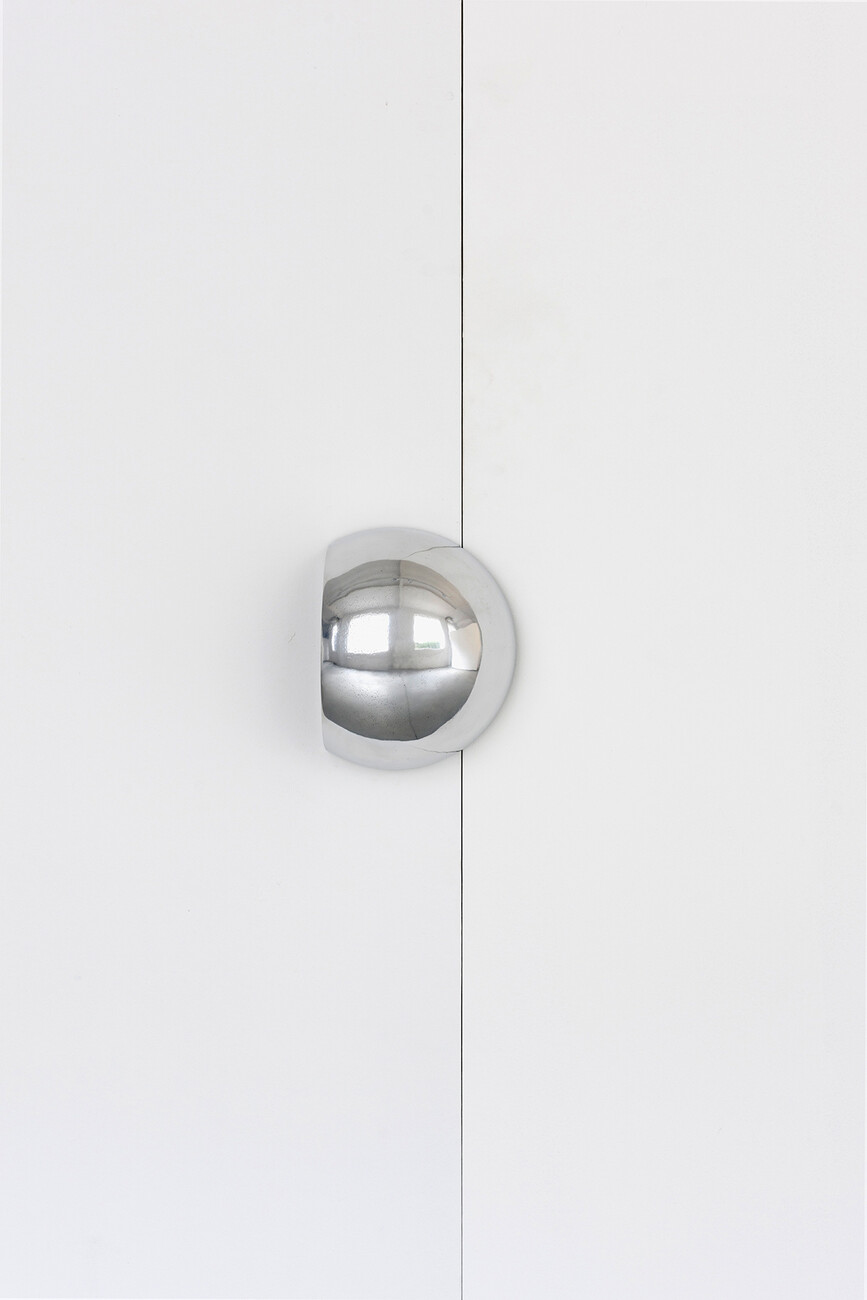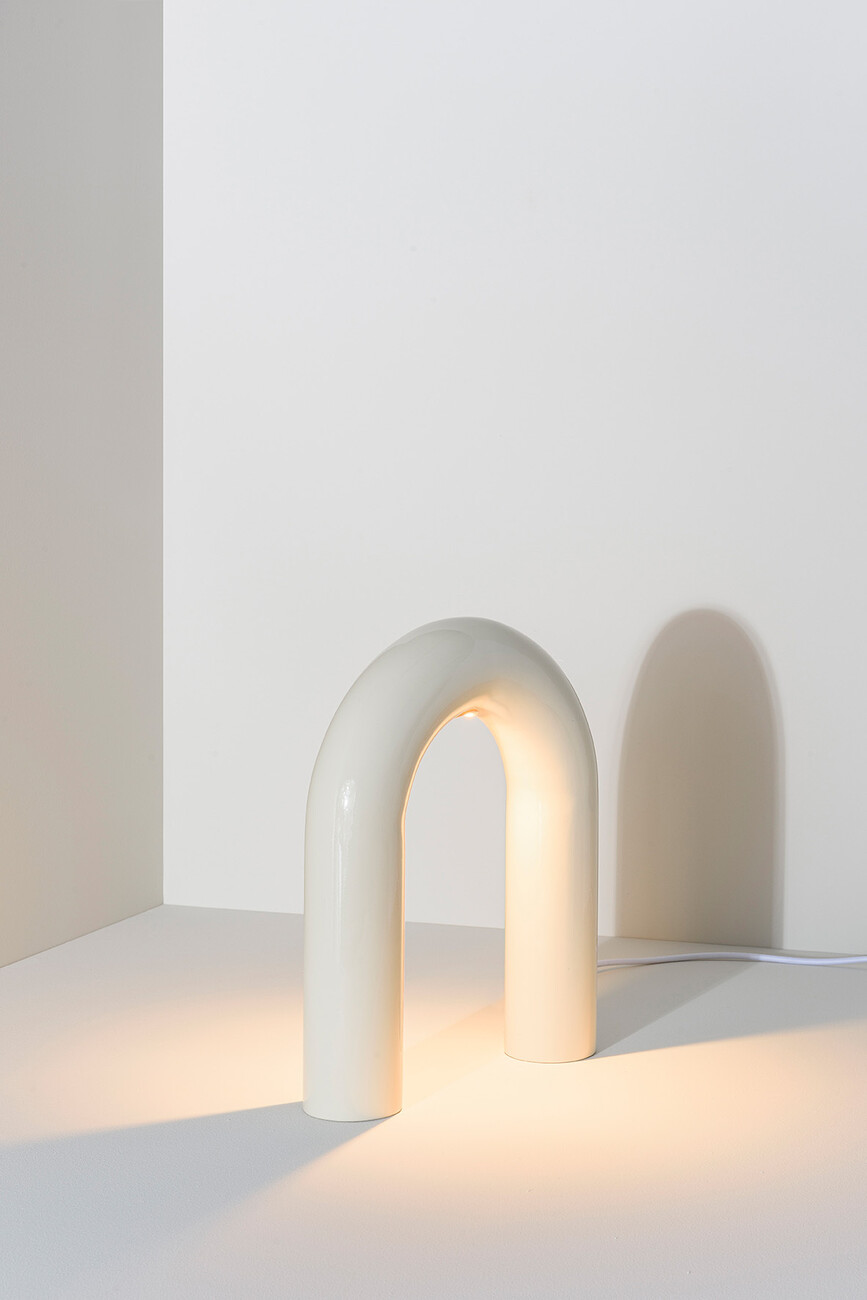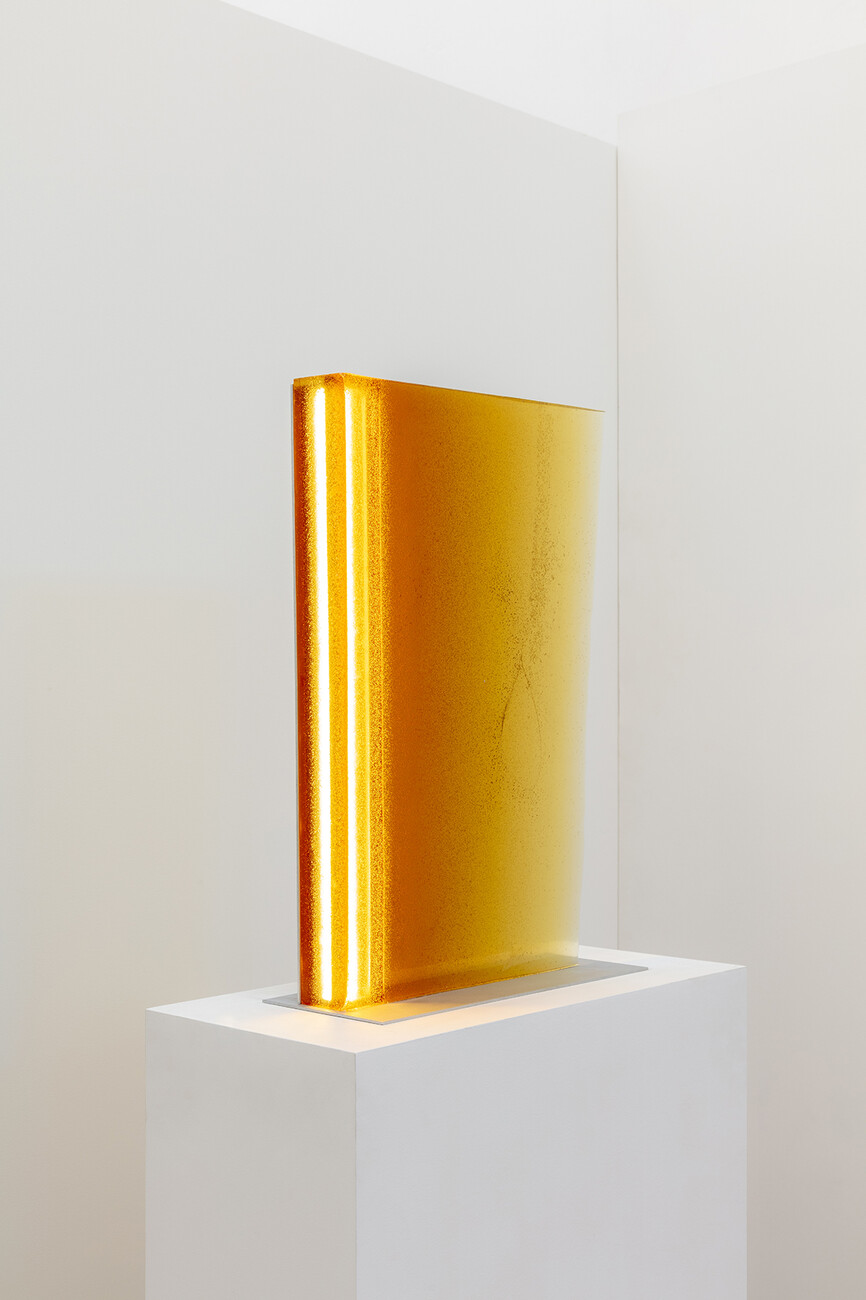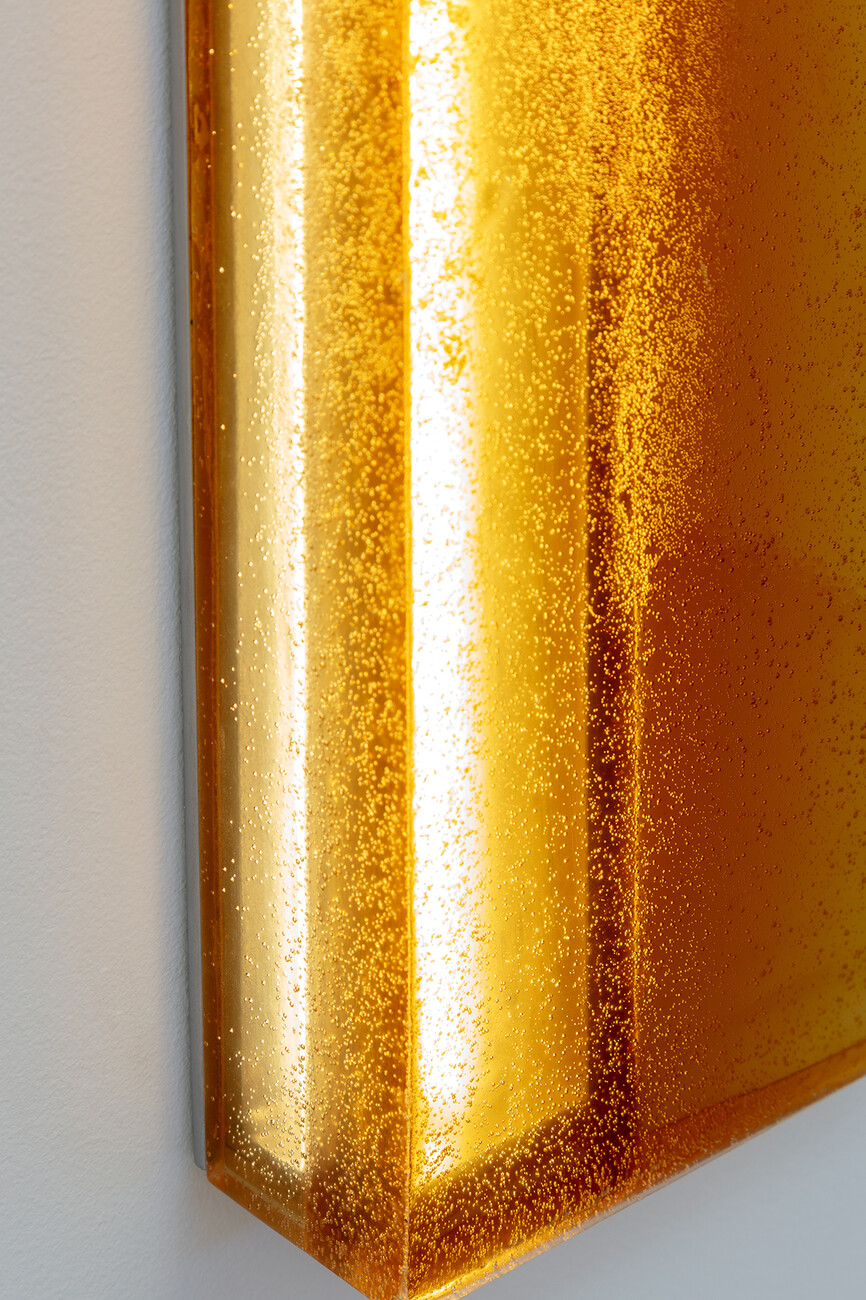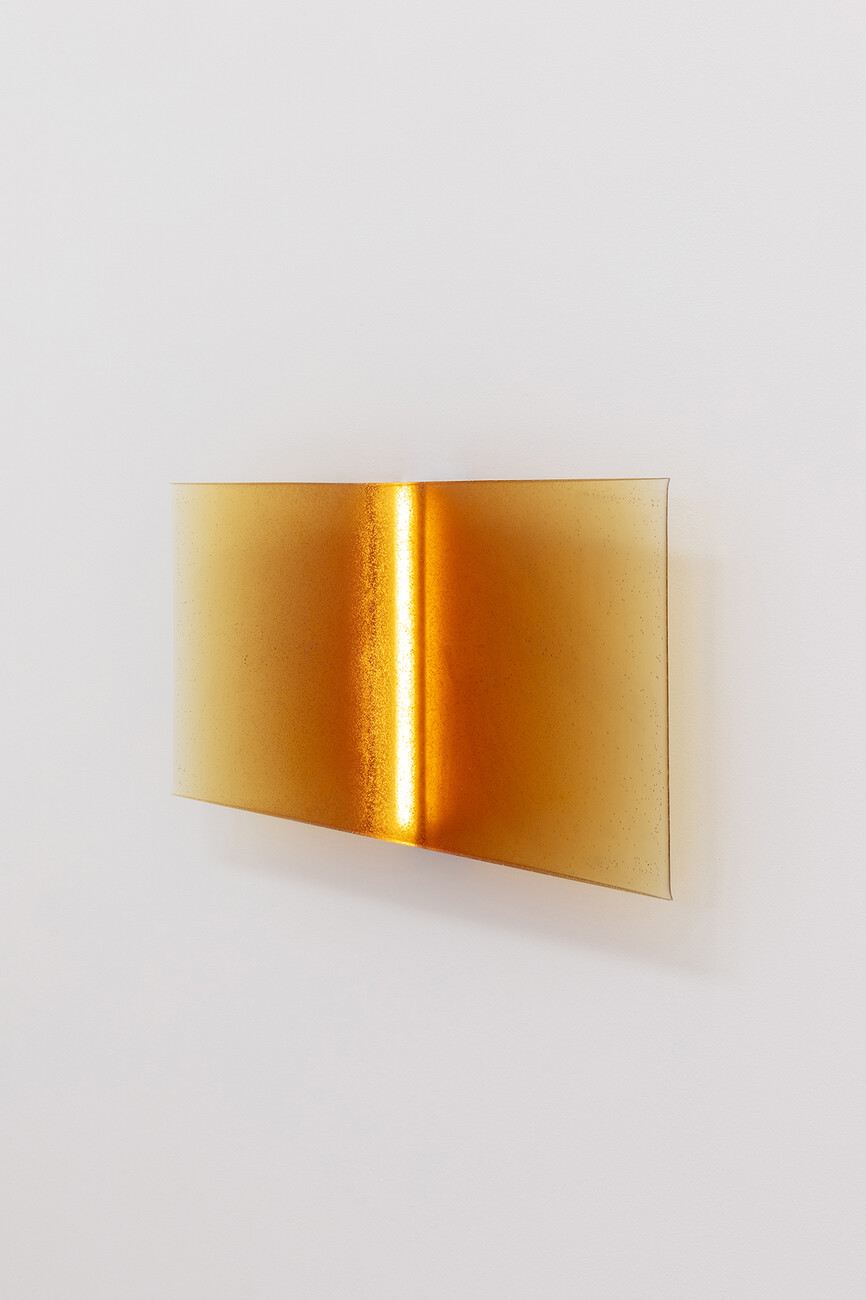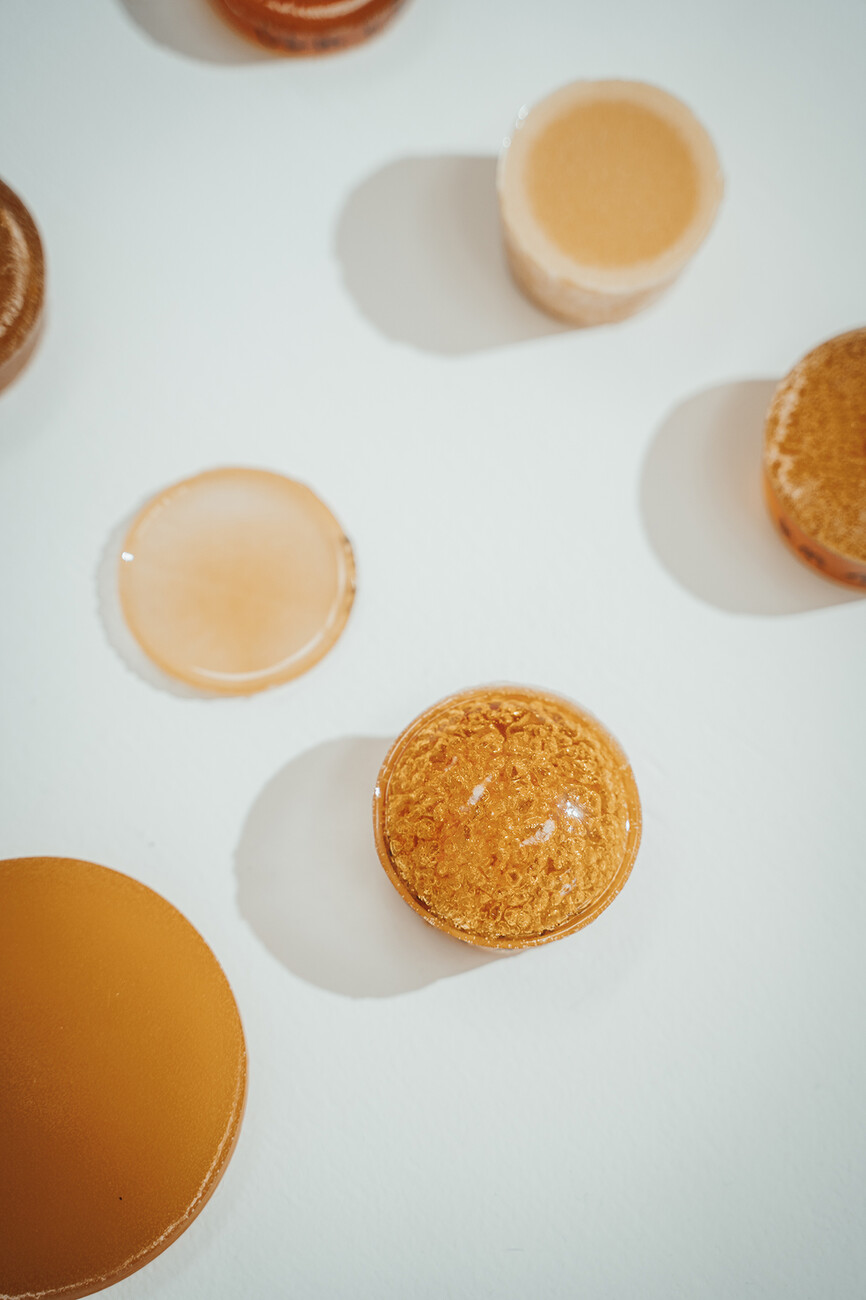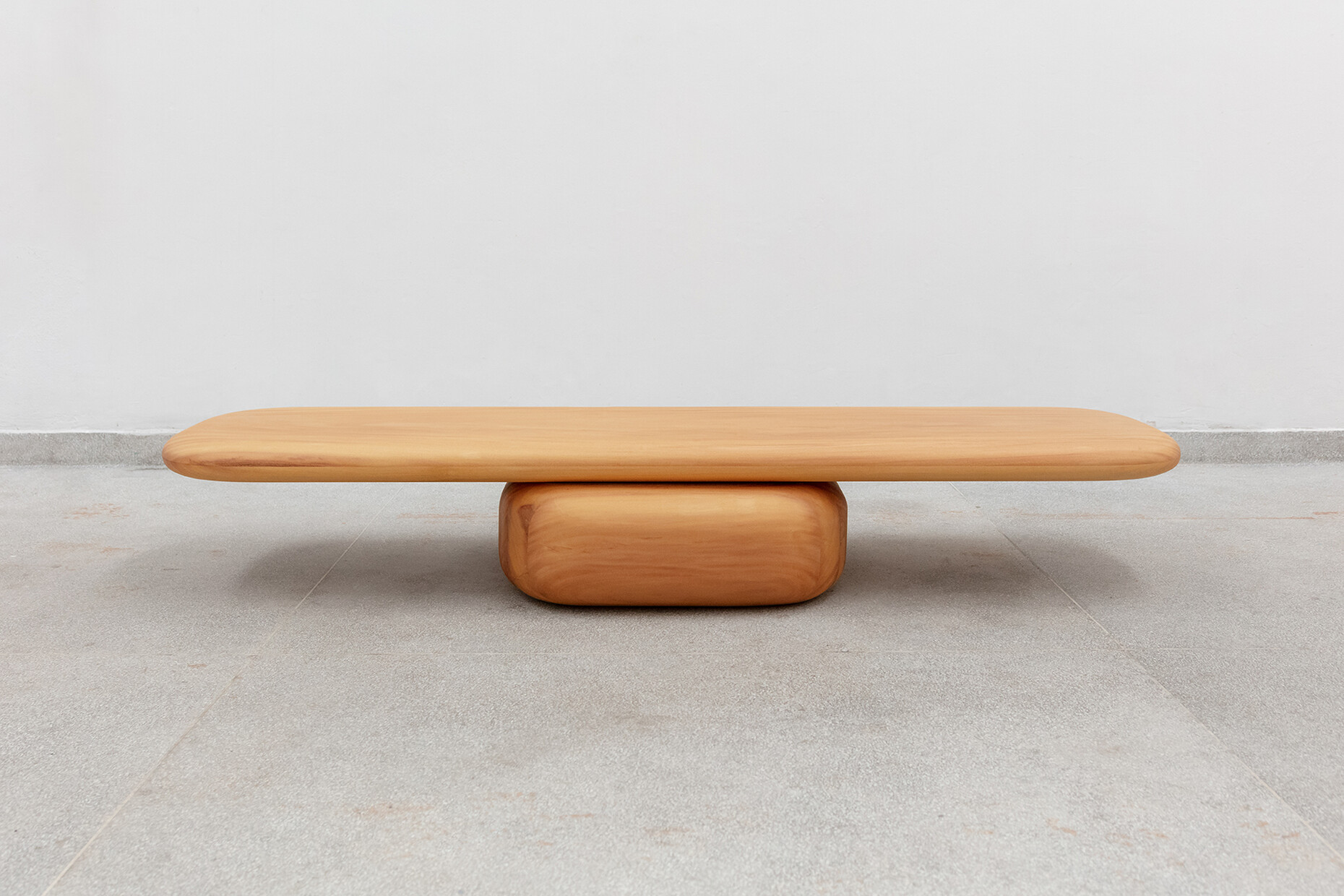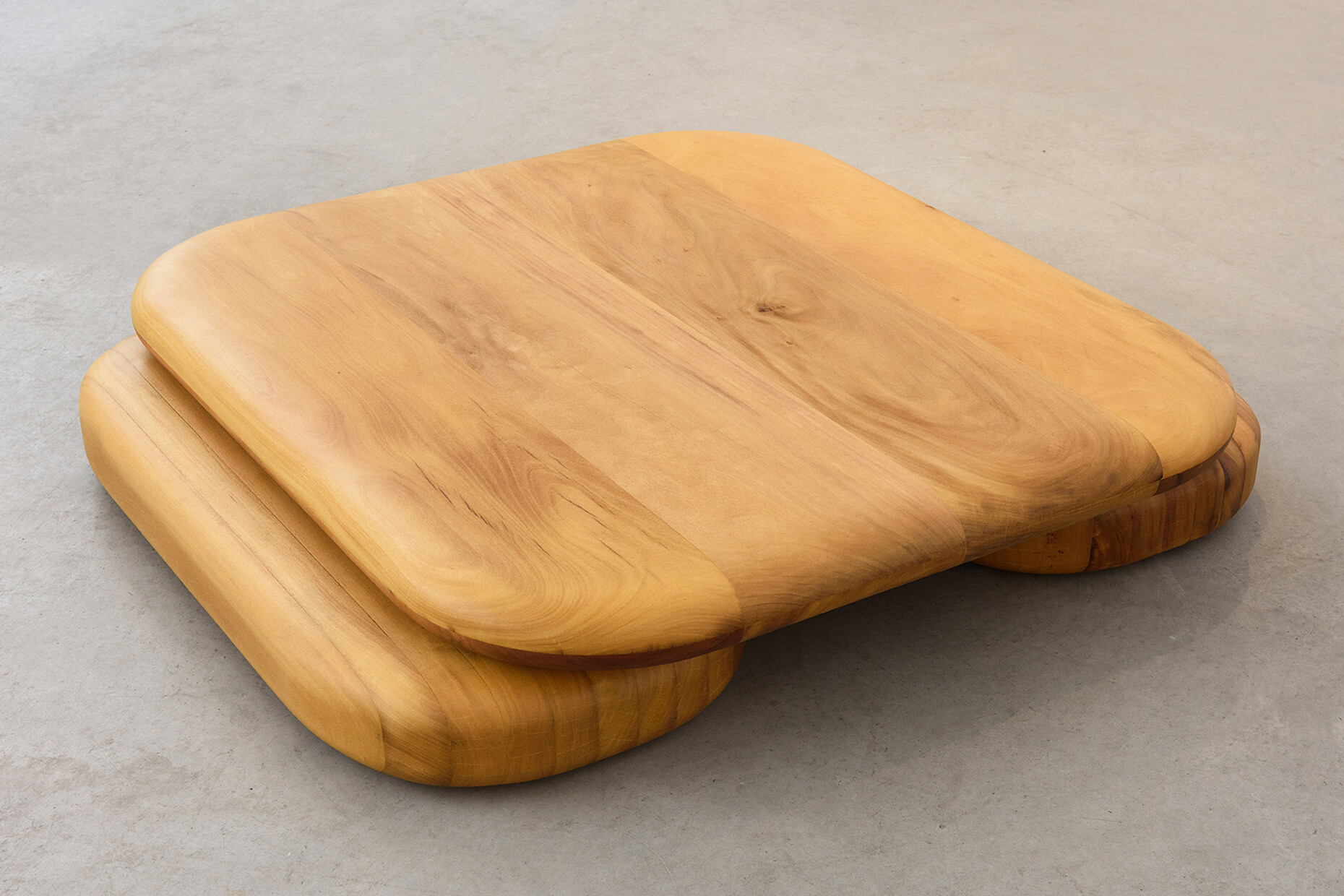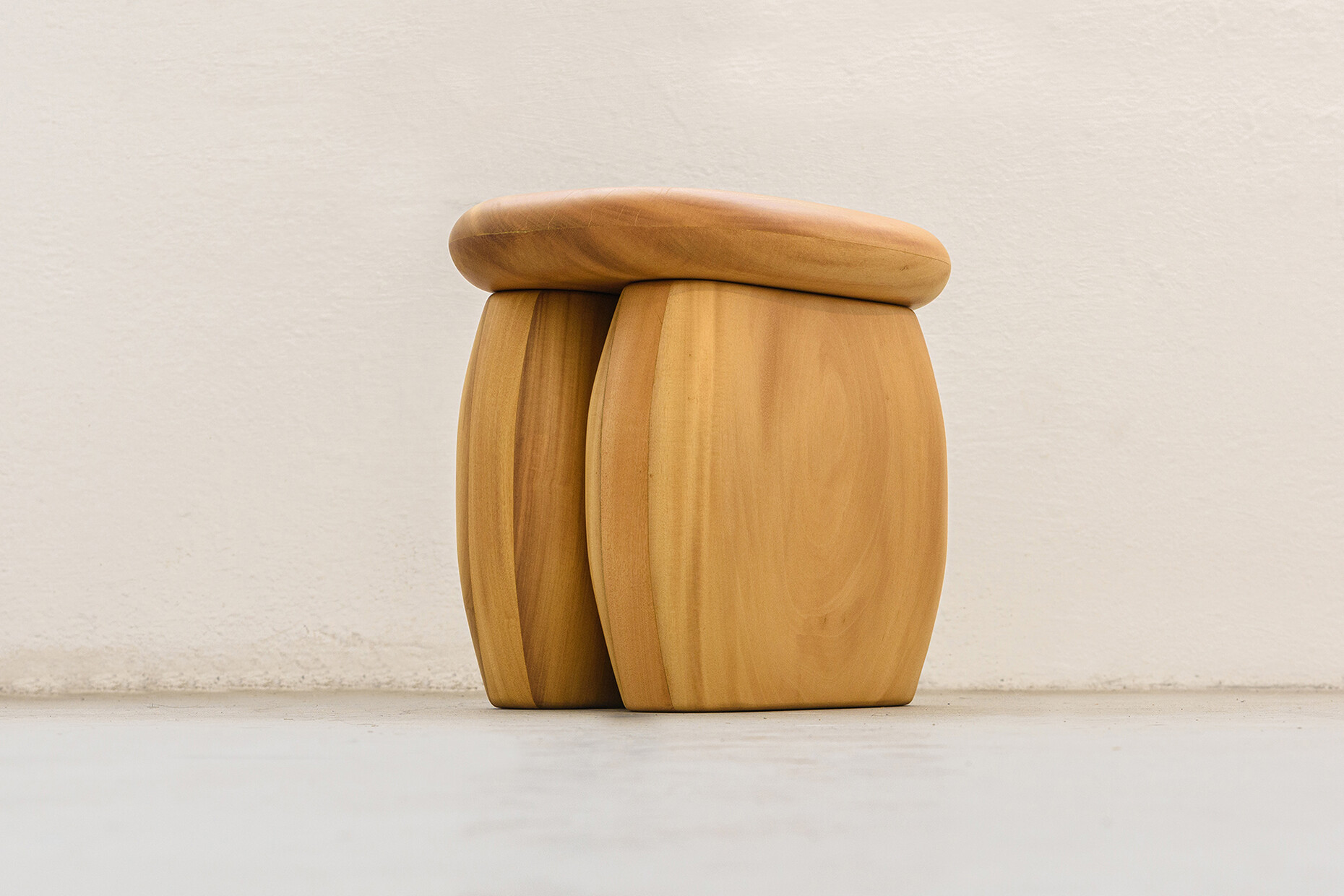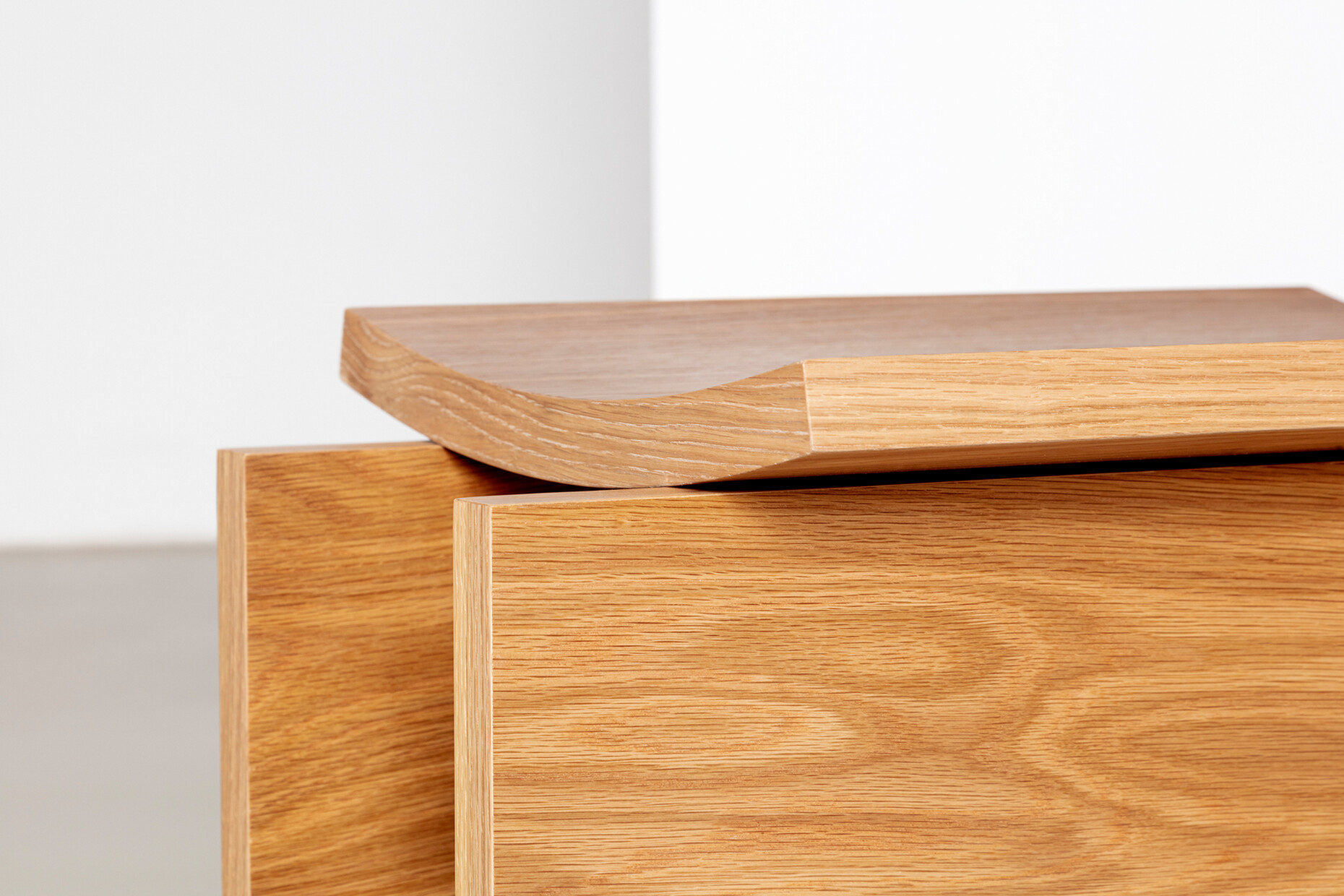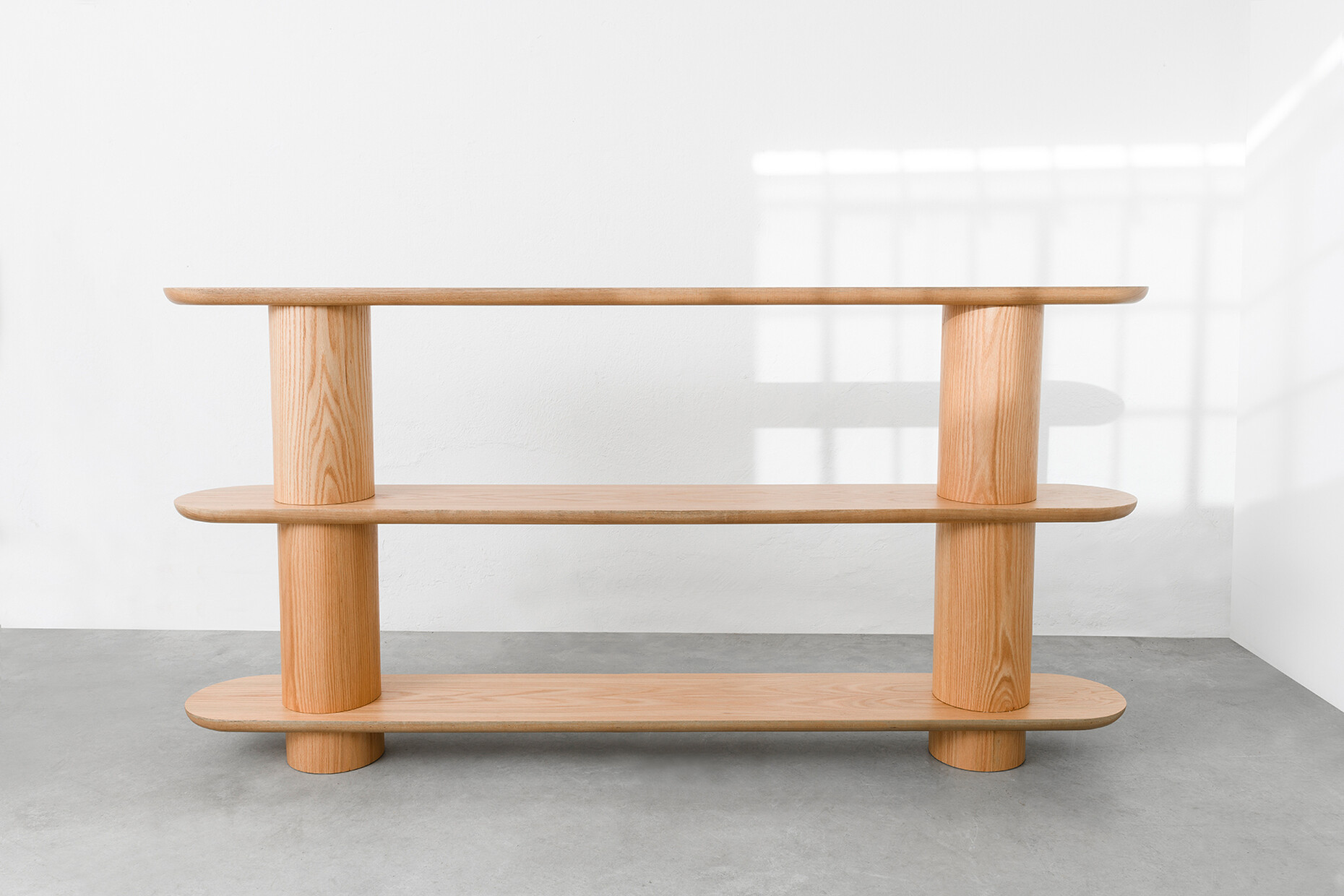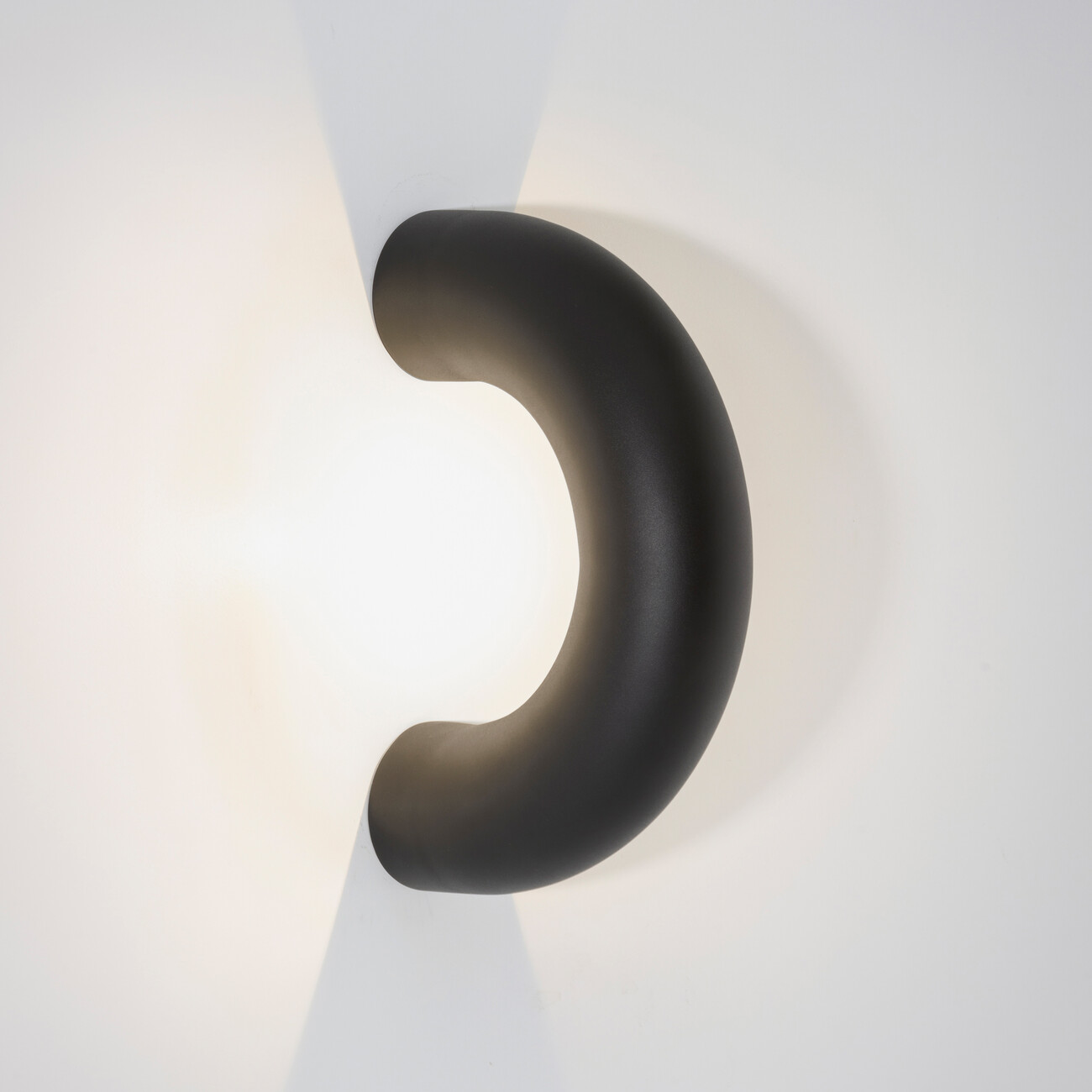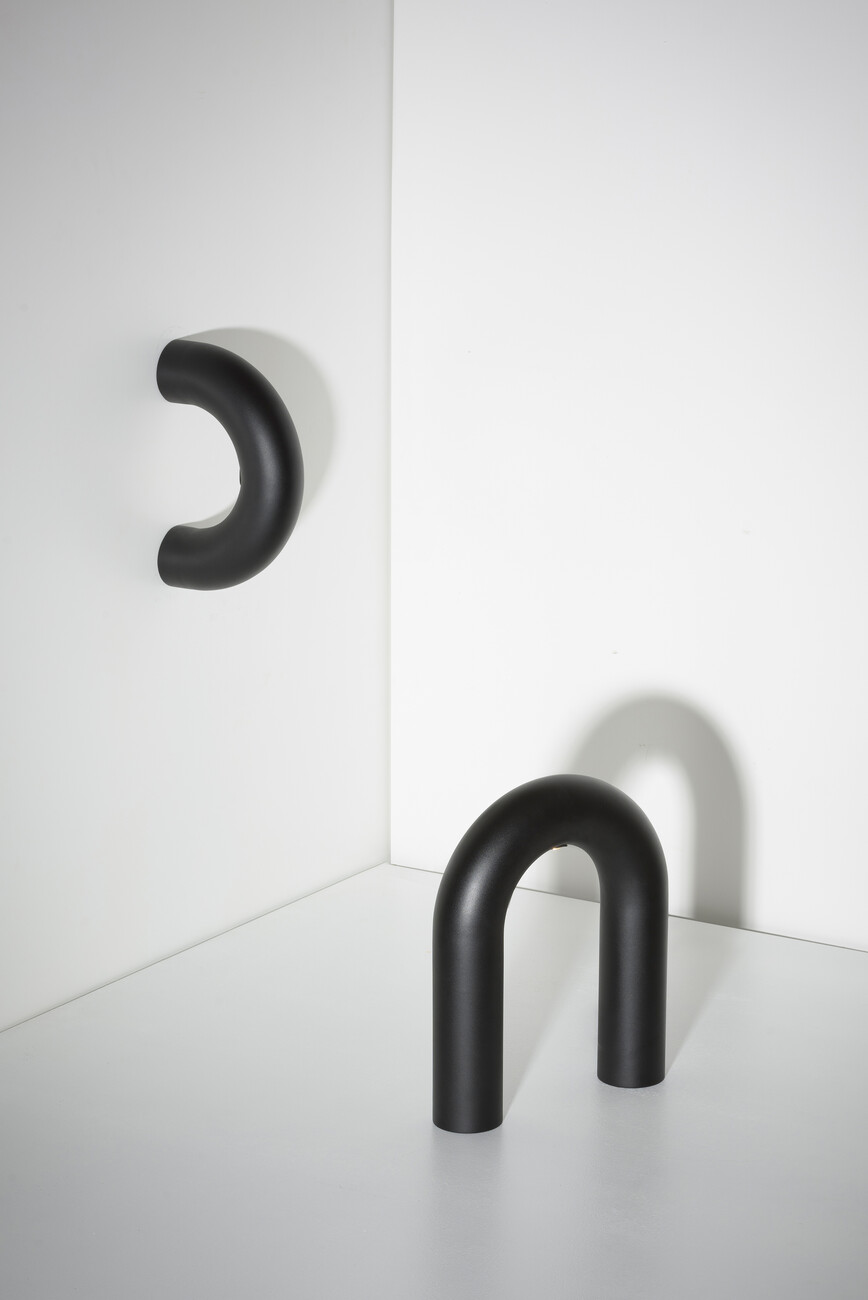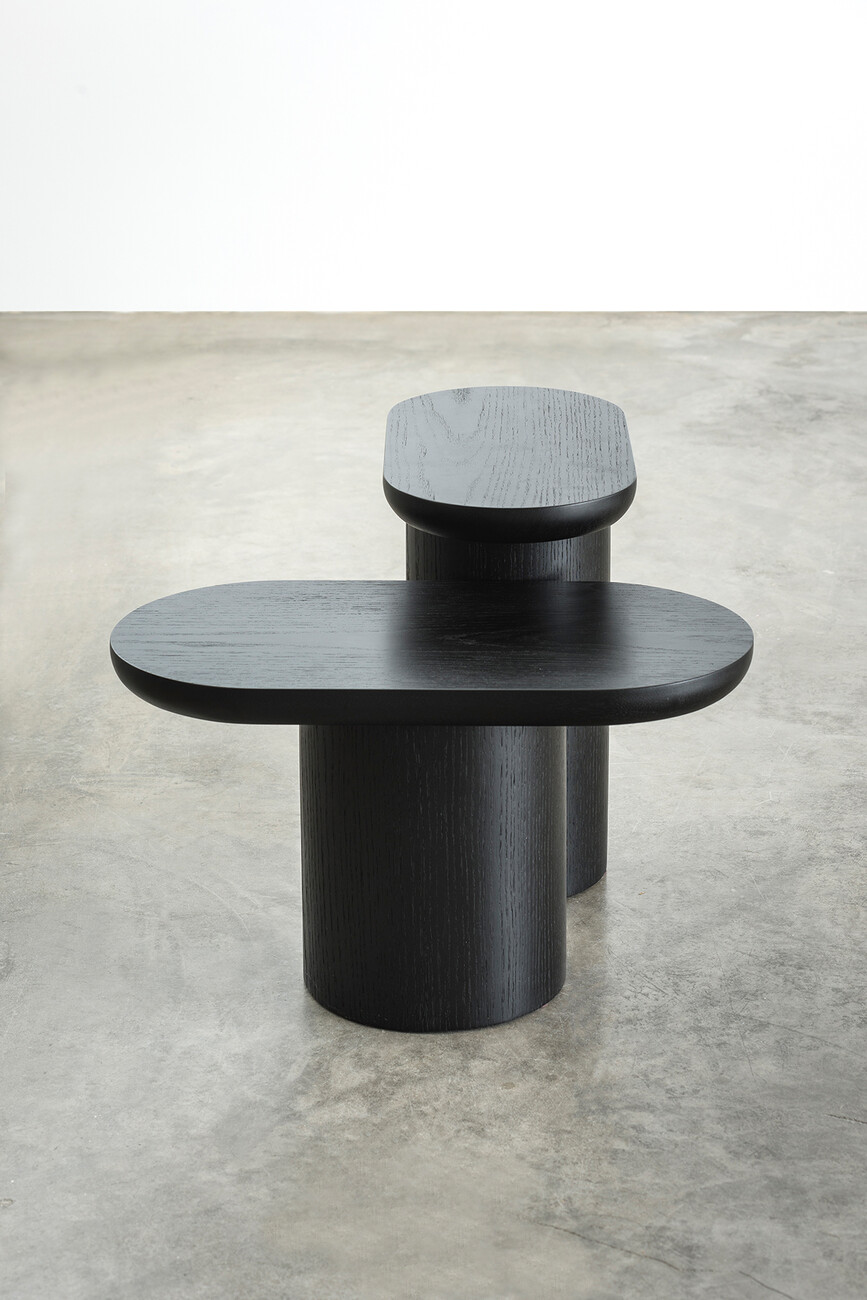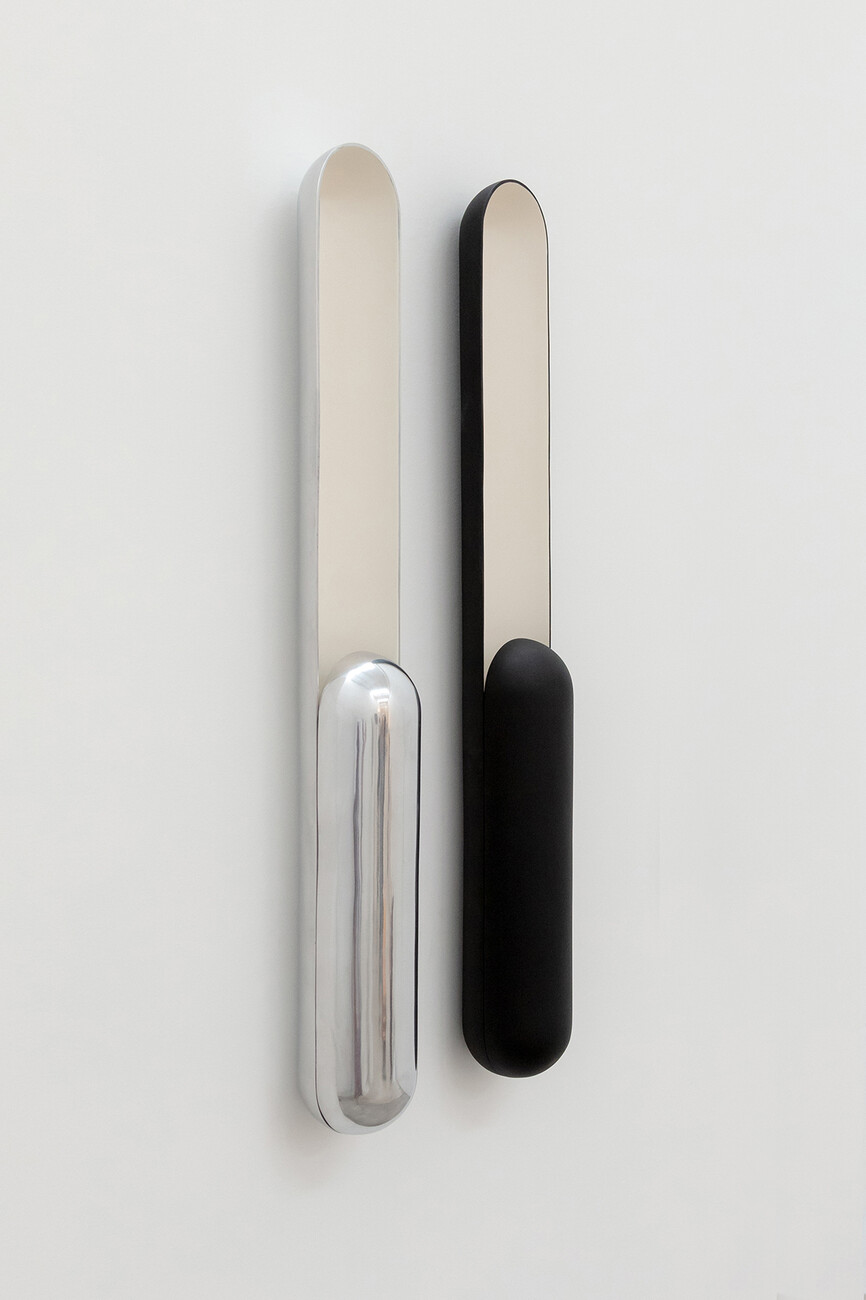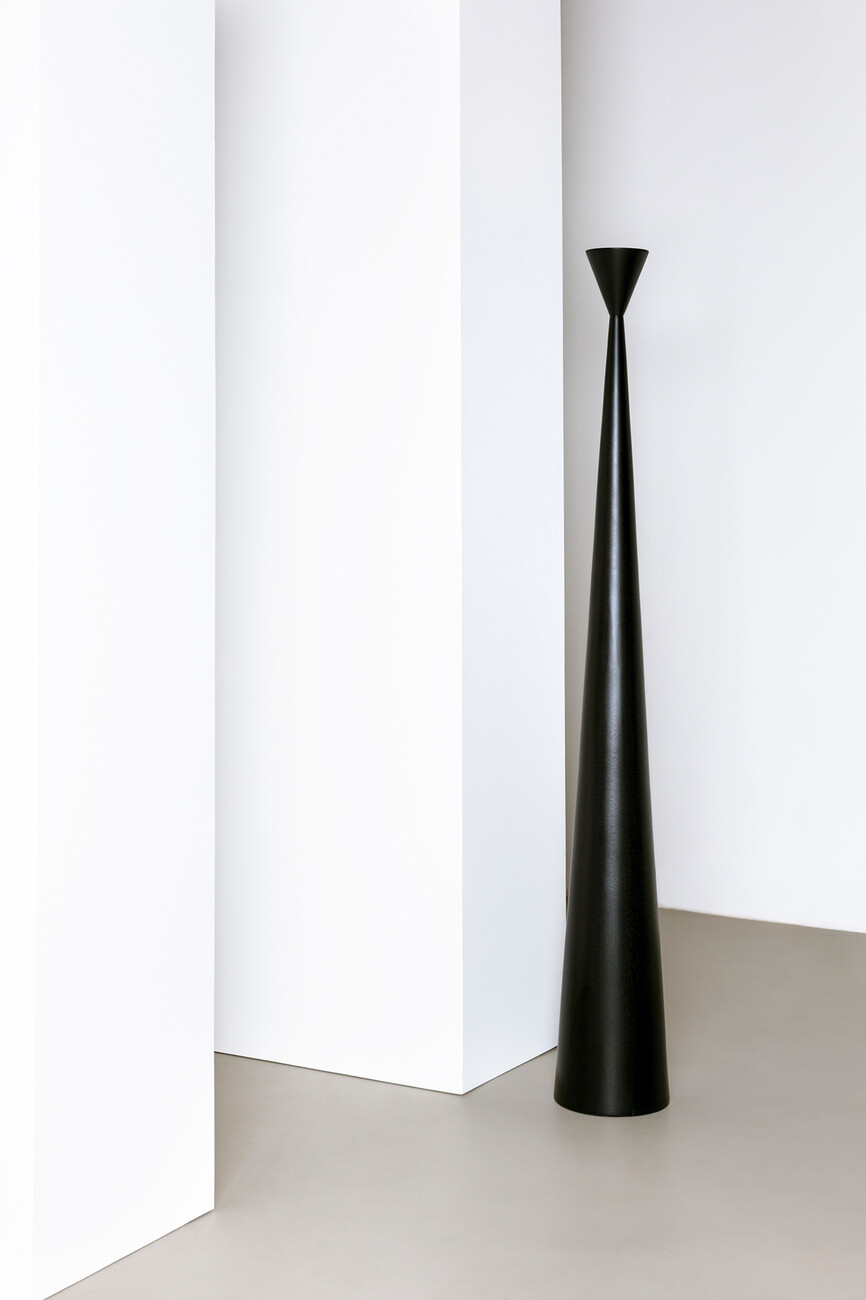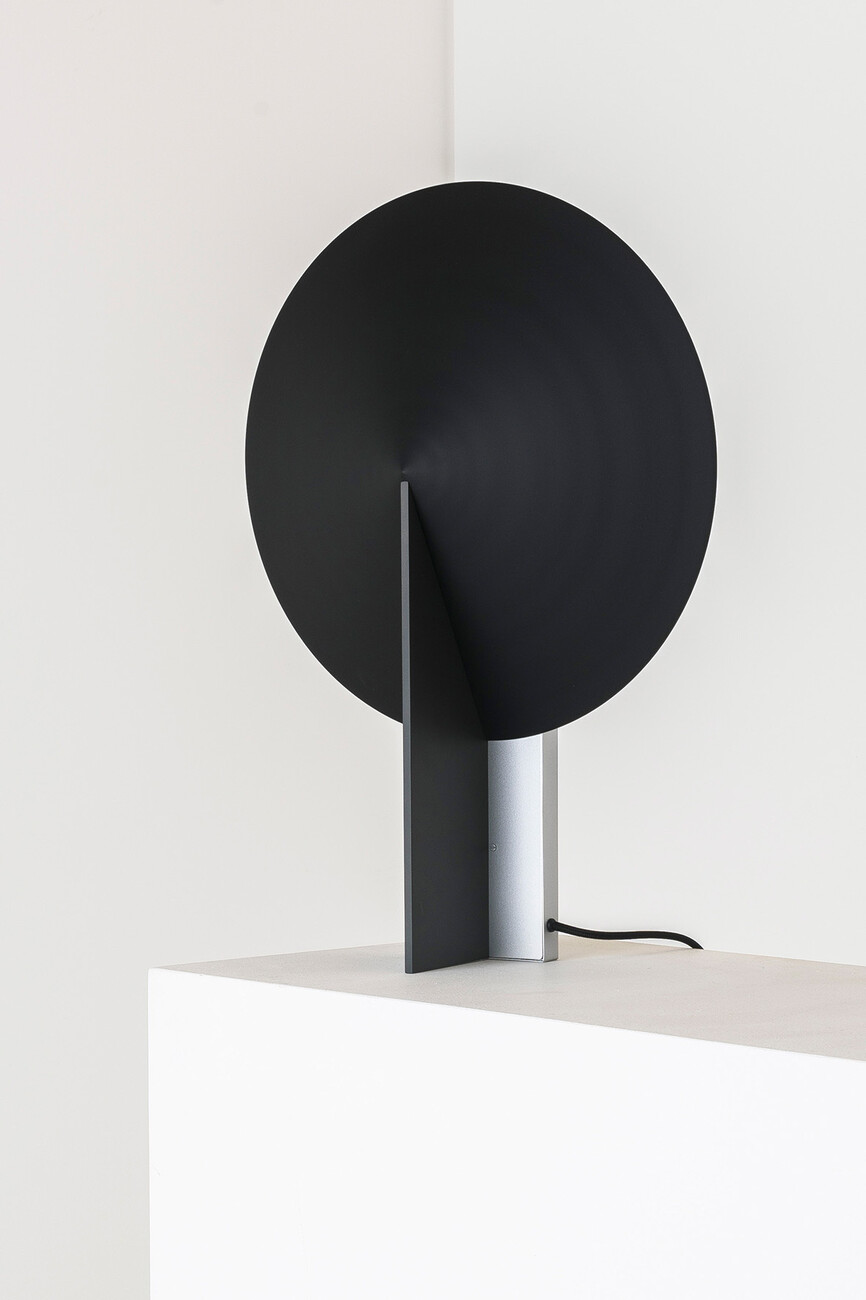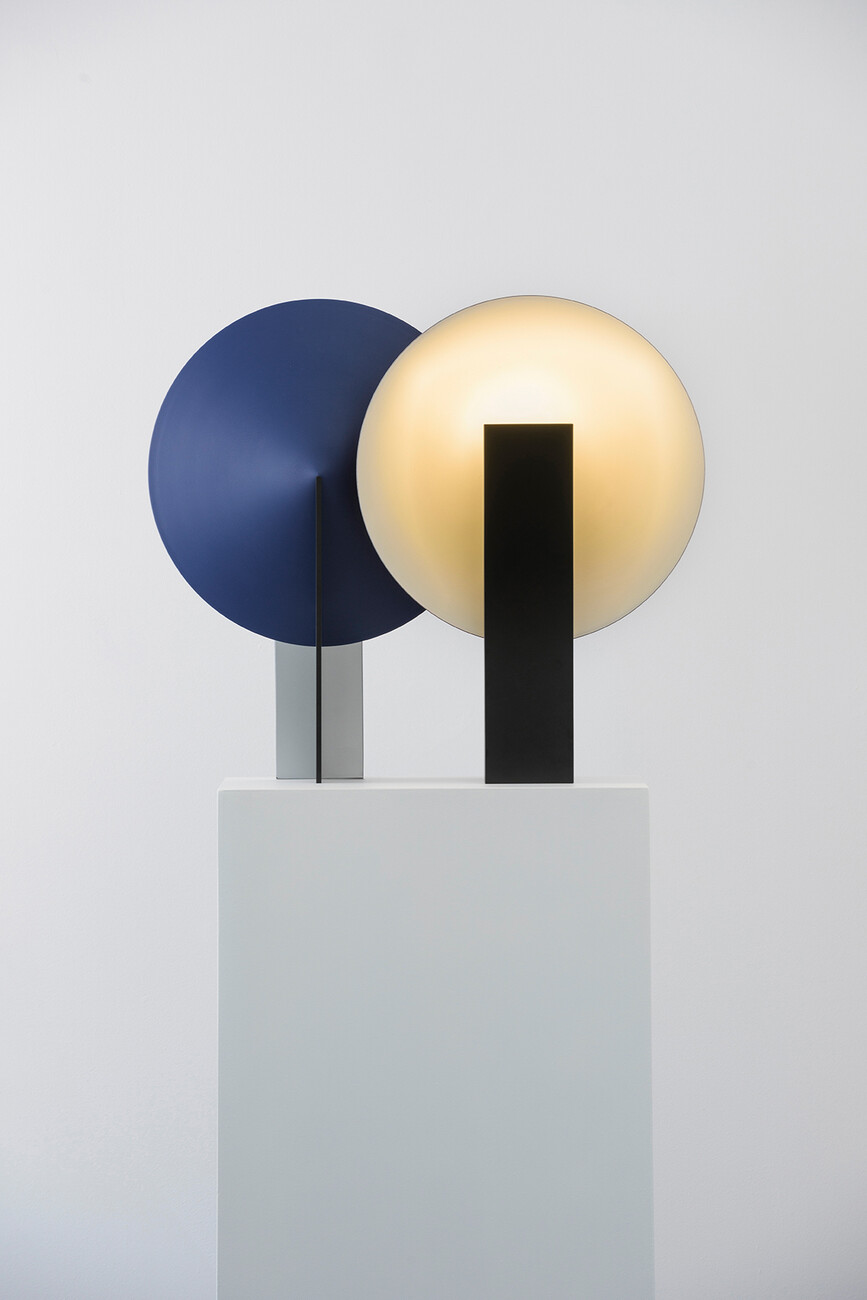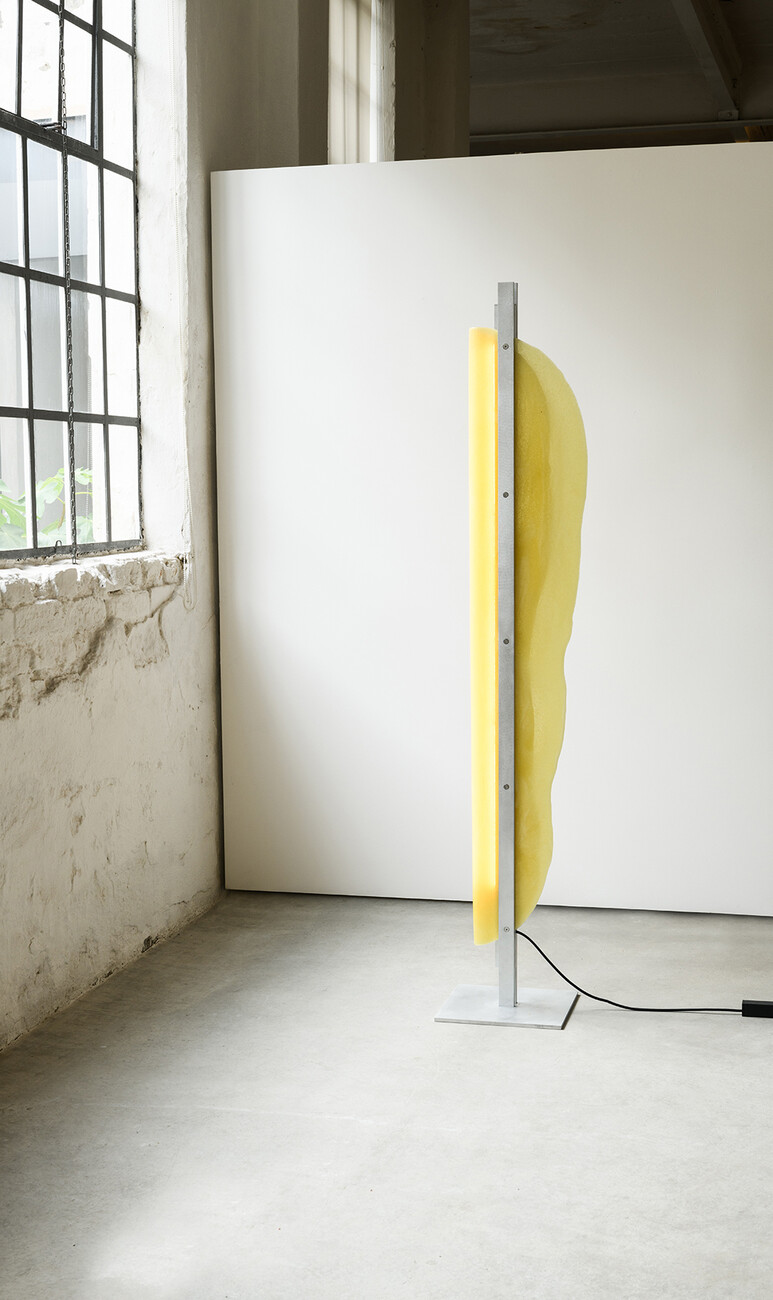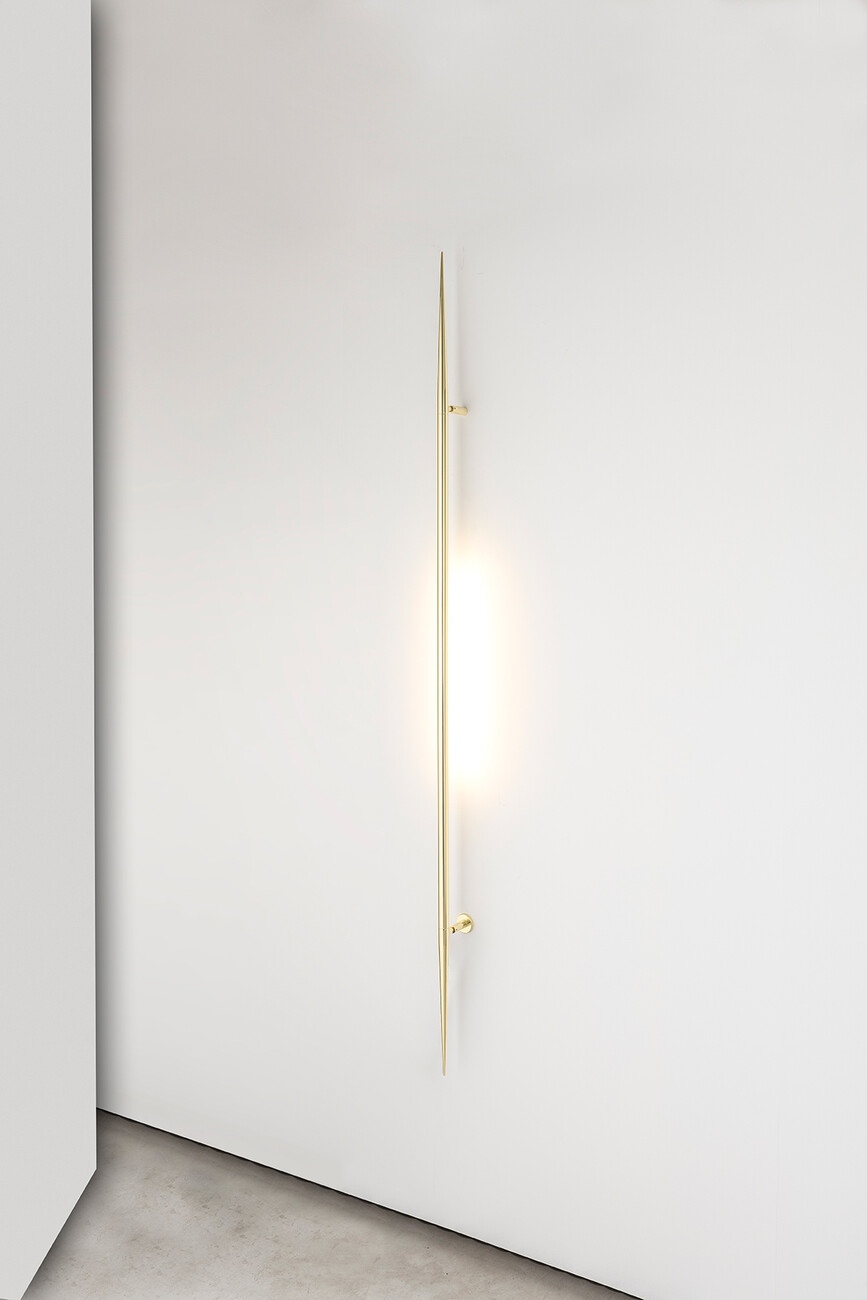YOUNG TALENTS
The force of choice
Anna Moldenhauer: You were both born in Brasília. Mariana, you studied Product Design there, and you Ricardo, opted for Architecture. In 2015, you opened your studio in São Paulo – how have your lives and your education in the two cities influenced your work?
Mariana Ramos: Brasília is a very young city; it was built in the 1960s. It is one of the few cities built at a drawing board. It has a different urban configuration. All its buildings are surrounded by nature and the view is exceptional. Everything is very monumental and sculptural.
Ricardo Innecco: The shapes, the monumentality, the space, and the atmosphere have all greatly influenced our work. When studying architecture these subjects crop up repeatedly, so we pay great attention to the specifics of our surroundings.
You also design processes and research into materials, as well as focusing on installations and scenography. What is it about this interdisciplinary approach that fascinates you?
Mariana Ramos: We are very open to processes. Everything that challenges us in a project is actually a great starting point. Just as working with materials takes up a lot of our time. Both errors and objectives are elements that we incorporate into the path we take and thus play a part in helping to tell the relevant story and to build the end products. The space itself is also very important for us, even if it is only an imaginary one to begin with.
Ricardo Innecco: We have a fascination for creating. It's impressing how working with different kind of projects at the same time is like a jigsaw puzzle, in which the parts get assembled day by day. Sometimes, the investigation of the production processes for creating our products becomes a starting point for other projects (like scenography, installation or commissioned works) and vice-versa. There is also this this atmosphere we have in mind and that can be seen in everything we do. Somehow, we try to reproduce the silent atmosphere of Brasília, our hometown, where there's always space for looking at things.
Mariana Ramos: Over the years, the studio developed its own language, where formal simplicity and constructive accuracy create narratives that, even when complex, have lightness in their synthesis. We believe this also connects the different projects that we do.
Ricardo Innecco: The fact that our work is interdisciplinary relates to Brazil having industrialised late in its history. Brazilian designers work mainly with things they have produced themselves because ten years ago our industry was not ready for the idea of including local designers in the actual processes. If we wanted to realise our designs our only option was to collaborate with local manufacturers or small companies. We basically design, manufacture, and warehouse the output, and then sell it to the end consumers. A few years ago, the Brazilian market - or rather industry - started to become more open-minded, started to notice the designers in Brazil and develop projects with them. This has changed our work. The sunny weather and "easy going" culture of Brazil (even though being a complex country with serious issues to deal with) also plays an important role in our way of doing things. We have this sense of humor that can be noticed in our works.
When does an external project fascinate you?
Ricardo Innecco: Sometimes what we are talking about is the opportunity to work with a specific material or process. Something we have never done before, or we think we would like to try out. We are talking about the opportunity to test something new. That said, we also turn down many inquiries from outside parties if they don’t fit in with our way of working.
Mariana Ramos: We are talking about creating, the freedom to explore something and together develop materials or techniques. I think that is the point when we say “yes” to an inquiry. With architecture practices what also interests us is to combine the creative languages with one another, that’s what makes cooperating exciting.
One example of your work is the luminaire collection Ricino made of plant castor oil resin (castor plant resin). What are you currently doing to take this alternative material to the next level?
Ricardo Innecco: When working with synthetic resins we discovered how damaging the material is, for people and our environment and accordingly started researching into natural resins and their beneficial characteristics in order to open up new approaches. Fortunately, in Brazil we have many natural sources. We are now planning on developing new projects using the same material. Moreover, we have succeeded in introducing air into the material – the result is a second collection made of a mesh that is destined to act as a diffuser, called Ricino F (foam).
When manufacturing your work, you combine traditional artisanship with modern technology. Can you give us an example from your research?
Ricardo Innecco: The luminaires made of plant-based castor oil resin have an almost intangible look, and it’s the result of a digital process, from the mass of its volume to its shapes and specifying its luminous effect. For the Solida collection, we have use the technology to design and produce the tables digitally. Finally, human beings are responsible for the finishing process. This is a combination of traditional timber processing with the power of machines using digital technology.
Do you work with artificial intelligence?
Mariana Ramos: Not yet.
Your work often has a strong sculptural presence and, for me, resembles a graphic exploration of space. Your objects create an atmosphere. What do you crucially wish to convey with the design?
Ricardo Innecco: We always imagine the objects alone in a room. They have the power to change a place, with their shape, their outline, their effect. Particularly when we are talking about luminaires. For us, luminaires are interesting items because during the daytime they are usually switched off and not only their presence and the atmosphere in the room but also the impact of the architecture completely changes when they are switched on in the evening. They are sculptures during the day and get alive during the evening, being also able to transform and reveal architecture.
Mariana Ramos: Our objects are clearly structured in terms of both shape and materials. We aim to reduce form and material to the minimum required to fulfill the function. In parallel, we are always at pains to get the maximum effect out of our pieces, to explore the boundaries of its properties.
What are you currently working on?
Ricardo Innecco: We usually work on many projects simultaneously. As well as researching into natural materials we are also cooperating with several brands and will be able to present the results this year. For us, 2024 will be a year of experimentation and production. Moreover, we are celebrating our tenth anniversary.
What would you like your work to say to the next generation, the one currently still in the process of studying?
Mariana Ramos: That we should all become more aware of the materials we choose for our projects, products and consume.
